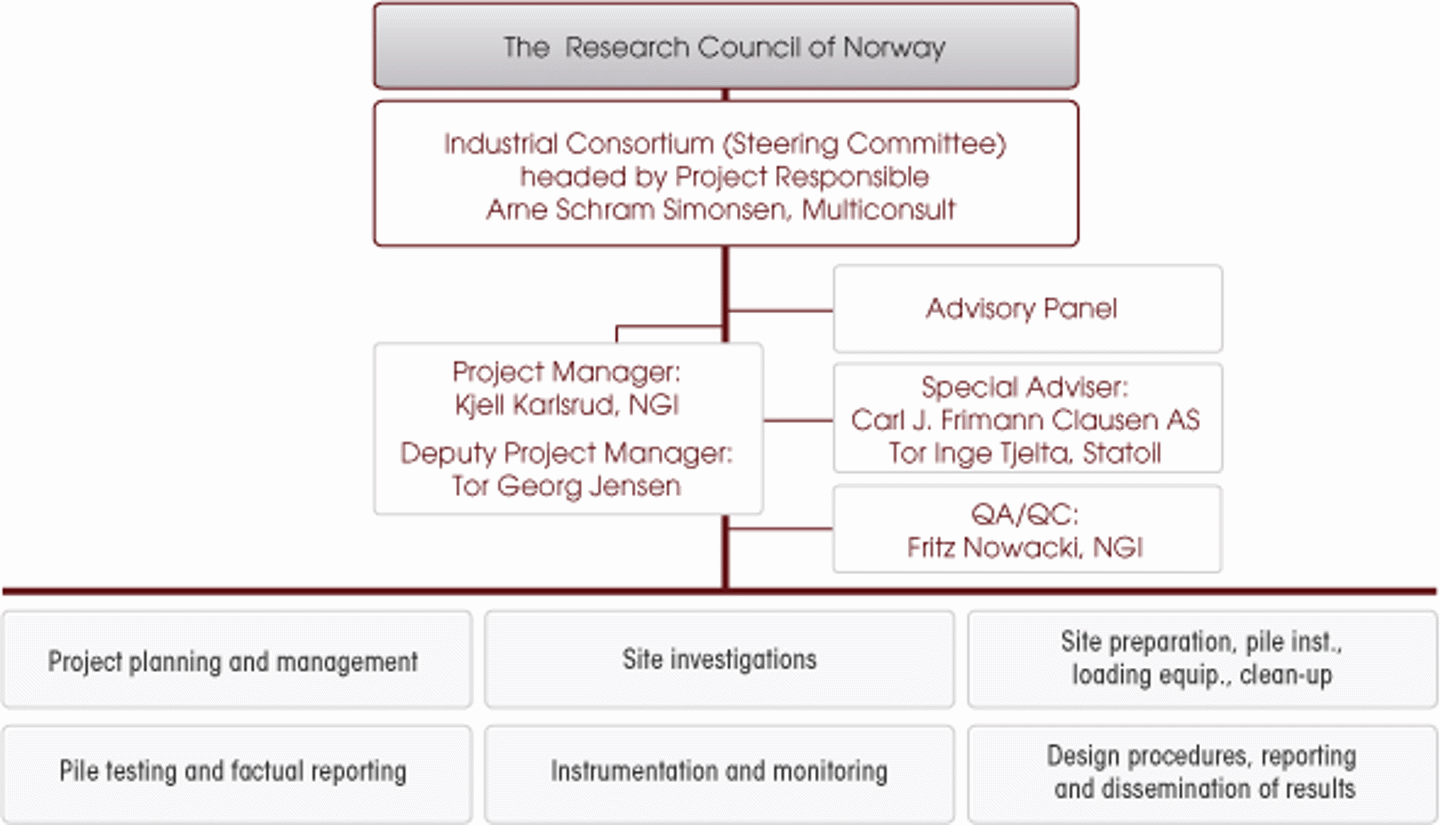Gains of 10 to 50 % have been reported over a period of two years, and 50 to 100 % after 10 years. The project goal is to develop design guidelines that account for time effects. This will be achieved through a systematic test program, where piles at five different sites over a time period of two years are tested. The site conditions cover soft and stiff clays and loose to medium-dense sands.
The work is organized as a Knowledge-building Project with User Involvement (KMB) with about 35 % funding from The Research Council of Norway (RCN). The rest is financed by various industry partners with a significant portion from Offshore Energy Companies. Multiconsult AS acts as a project partner towards RCN, and NGI has full responsibility for the planning and execution of the project.
Background
The main objective of the project is to establish design procedures that account for an increase in the axial bearing capacity of piles with time. Such anticipated gain in pile capacity is not incorporated in existing Design Codes like the American Petroleum Institute's (API) for offshore structures.

Piling at Helsinki waterfront ( Photo from the Ruukki website)
If an anticipated increase in bearing capacity with time can be accounted for in the design, it will open new possibilities for upgrading piled offshore structures, bridges, or other structures which in its lifetime may warrant modifications that increase the loads on the foundations.
Accounting for the expected increase in pile capacity with time would also have a positive impact on the "first-time" design of pile foundations. For structures it often takes from several months and up to a year or two from piles are installed to the structure is completed and the full design loads are applied. This is commonly the case for bridges, and also for some offshore structures.
There is little doubt that accounting for this potential gain in pile capacity with time has a potential for very significant direct and indirect cost savings. In cases where new and heavier production facilities are required for an offshore field re-development, one might eliminate the need for a new jacket structure if the existing one can be upgraded. Savings could then be of the order of several hundred million NOK. Potential savings for Norwegian bridges and land-based structures could average in the range of NOK 5 to 50 million per year.
The project has the following sub-objectives:
- review of all relevant existing data
- new pile load tests specifically designated to reveal time effects
- detailed planning and selection of test sites
- establishing instrumentation and monitoring systems
- site preparation and testing arrangements
- execution of tests
- development of new design procedures and ensuring that they will be incorporated into national and international design codes




